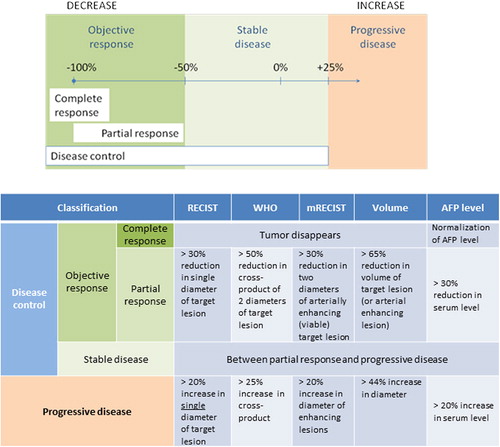Figures & data
Table I. Overview of current therapeutic modalities for HCC. Surgery offers the potential for cure. Local therapies may result in cure for very small lesions that are completely ablated, whereas other modalities result in reduction of tumor burden or delay in tumor progression.
Table II. Comparison of anatomical and morphological imaging-based criteria.
Figure 1. MR imaging of HCC. A: Pre-treatment. A solitary enhancing HCC is present in the right lobe. B: Post-transarterial chemoembolization. The HCC has been successfully treated, and there is an absence of viable tumor despite an increase in size of lesion.

Table III. Measures of response to therapy.
Figure 2. Criteria used for the classification of response to therapy for hepatocellular cancer. Disease control is defined as stable disease or objective response, whereas progressive disease is defined by change in selected imaging or biochemical parameters. AFP = alpha-fetoprotein; mRECIST = modified Response Evaluation Criteria in Solid Tumors; RECIST = Response Evaluation Criteria in Solid Tumors; WHO = World Health Organization.

